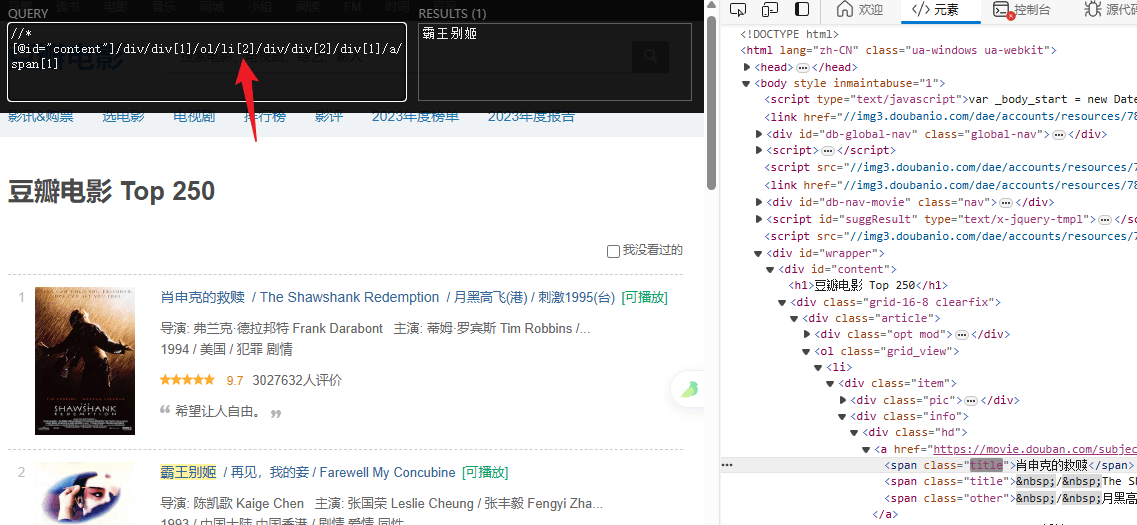一、类的定义
1、类定义格式
• class为定义类的关键字,Stack为类的名字,{}中为类的主体,注意类定义结束时后面分号不能省
略。类体中内容称为类的成员:类中的变量称为类的属性或成员变量; 类中的函数称为类的方法或
者成员函数。
• 为了区分成员变量,⼀般习惯上成员变量会加⼀个特殊标识,如成员变量前面或者后面加_ 或者 m
开头,注意C++中这个并不是强制的,只是⼀些惯例。
• C++中struct也可以定义类,C++兼容C中struct的用法,同时struct升级成了类,明显的变化是
struct中可以定义函数,一般情况下我们还是推荐用class定义类。
• 定义在类面的成员函数默认为inline。
#include<iostream>
using namespace std;
class Stack
{
public:
// 成员函数
void Init(int n = 4)
{
array = (int*)malloc(sizeof(int) * n);
if (nullptr == array)
{
perror("malloc申请空间失败");
return;
}
capacity = n;
top = 0;
}
void Push(int x)
{
// ...扩容
array[top++] = x;
}
int Top()
{
assert(top > 0);
return array[top - 1];
}
void Destroy()
{
free(array);
array = nullptr;
top = capacity = 0;
}
private:
// 成员变量
int* array;
size_t capacity;
size_t top;
}; // 分号不能省略
int main()
{
Stack st;
st.Init();
st.Push(1);
st.Push(2);
cout << st.Top() << endl;
st.Destroy();
return 0;
}
#include<iostream>
using namespace std;
// C++升级struct升级成了类
// 1、类⾥⾯可以定义函数
// 2、struct名称就可以代表类型
// C++兼容C中struct的⽤法
typedef struct ListNodeC
{
struct ListNodeC* next;
int val;
}LTNode;
// 不再需要typedef,ListNodeCPP就可以代表类型
struct ListNodeCPP
{
void Init(int x)
{
next = nullptr;
val = x;
}
ListNodeCPP* next;
int val;
};
2、访问限定符
• C++⼀种实现封装的方式,用类将对象的属性与方法结合在⼀块,让对象更加完善,通过访问权限
选择性的将其接口提供给外部的用户使用。
• public修饰的成员在类外可以直接被访问;protected和private修饰的成员在类外不能直接被访
问。

• 访问权限作用域从该访问限定符出现的位置开始直到下⼀个访问限定符出现时为止,如果后面没有
访问限定符,作用域就到 }即类结束。
• class定义成员没有被访问限定符修饰时默认为private,struct默认为public。
• ⼀般成员变量都会被限制为private/protected,需要给别⼈使⽤的成员函数会放为public。

3、类域
• 类定义了⼀个新的作用域,类的所有成员都在类的作用域中,在类体外定义成员时,需要使用 :: 作
用域操作符指明成员属于哪个类域。
• 类域影响的是编译的查找规则,下面程序中Init如果不指定类域Stack,那么编译器就把Init当成全
局函数,那么编译时,找不到array等成员的声明/定义在哪里,就会报错。指定类域Stack,就是知
道Init是成员函数,当前域找不到的array等成员,就会到类域中去查找。
#include<iostream>
using namespace std;
class Stack
{
public:
// 成员函数
void Init(int n = 4);
private:
// 成员变量
int* array;
size_t capacity;
size_t top;
};
// 声明和定义分离,需要指定类域
void Stack::Init(int n)
{
array = (int*)malloc(sizeof(int) * n);
if (nullptr == array)
{
perror("malloc申请空间失败");
return;
}
capacity = n;
top = 0;
}
int main()
{
Stack st;
st.Init();
return 0;
}
二、实例化
1、概念
• 用类类型在物理内存中创建对象的过程,称为类实例化出对象。
• 类是对象进用⼀种抽象描述,是⼀个模型⼀样的东西,限定了类有哪些成员变量,这些成员变量只
是声明,没有分配空间,⽤类实例化出对象时,才会分配空间。
• ⼀个类可以实例化出多个对象,实例化出的对象 占用实际的物理空间,存储类成员变量。打个
比方:类实例化出对象就像现实中使用建筑设计图建造出房子,类就像是设计图,设计图规划了有多
少个房间,房间大小功能等,但是并没有实体的建筑存在,也不能住人,用设计图修建出房子,房
子才能住人。同样类就像设计图⼀样,不能存储数据,实例化出的对象分配物理内存存储数据。

#include<iostream>
using namespace std;
class Date
{
public:
void Init(int year, int month, int day)
{
_year = year;
_month = month;
_day = day;
}
void Print()
{
cout << _year << "/" << _month << "/" << _day << endl;
}
private:
// 这⾥只是声明,没有开空间
int _year;
int _month;
int _day;
};
int main()
{
// Date类实例化出对象d1和d2
Date d1;
Date d2;
d1.Init(2024, 3, 31);
d1.Print();
d2.Init(2024, 7, 5);
d2.Print();
return 0;
}
2、对象大小
分析⼀下类对象中哪些成员呢?类实例化出的每个对象,都有独立的数据空间,所以对象中肯定包含
成员变量,那么成员函数是否包含呢?首先函数被编译后是⼀段指令,对象中没办法存储,这些指令
存储在⼀个单独的区域(代码段),那么对象中非要存储的话,只能是成员函数的指针。再分析⼀下,对
象中是否有存储指针的必要呢,Date实例化d1和d2两个对象,d1和d2都有各自独立的成员变量
_year/_month/_day存储各自的数据,但是d1和d2的成员函数Init/Print指针却是⼀样的,存储在对象
中就浪费了。


C++规定类实例化的对象也要符合内存对齐的规则。
-
结构体的第⼀个成员对齐到和结构体变量起始位置偏移量为0的地址处
-
其他成员变量要对齐到某个数字(对齐数)的整数倍的地址处。
对齐数 = 编译器默认的⼀个对齐数 与 该成员变量大小的较小值。VS 中默认的值为 8 Linux中 gcc 没有默认对齐数,对
齐数就是成员自身的大小
- 结构体总大小为最大对齐数(结构体中每个成员变量都有⼀个对齐数,所有对齐数中最大的)的
整数倍。
- 如果嵌套了结构体的情况,嵌套的结构体成员对齐到自己的成员中最大对齐数的整数倍处,结构
体的整体大小就是所有最大对齐数(含嵌套结构体中成员的对齐数)的整数倍。
这么说有点晦涩难懂,接下来给大家几个例子了解。
class MyClass1
{
char c1;
int i;
char c2;
};
int main()
{
MyClass cl;
cout << sizeof(cl) << endl;
return 0;
}
对于结构体第一个变量我们是不用考虑c1的偏差值,直接存放,根据对齐规则,i要放在4的倍数的位置,即偏差值为4的位置,c2是char类型所以可以随便放(任何数都是1的倍数),所以这个在内存中是这么放的:

所以总大小为9但其成员最大对齐数是4,5不是4的倍数,所以最终内存大小为12字节。
class MyClass1
{
char c1;
int i;
char c2;
};
class S4
{
char c1;
MyClass1 s1;
int d;
};
int main()
{
S4 s;
cout << sizeof(s) << endl;
return 0;
}
由上面知道MyClass1大小为12,其中它的成员最大对齐数为4,所以待会对齐到4的倍数那所以其在内存存放是这样的:

总大小为20,其中最大对齐数为4,而20是4的倍数,所以这个大小为20字节。
最后,我们思考如果一个类没有成员对象大小是怎么样?
class A
{
public:
void Print()
{
cout << _ch << endl;
}
private:
char _ch;
int _i;
};
class B
{
public:
void Print()
{
//...
}
};
class C
{};
int main()
{
A a;
B b;
C c;
cout << sizeof(a) << endl;
cout << sizeof(b) << endl;
cout << sizeof(c) << endl;
return 0;
}
上面的程序运行后,我们看到没有成员变量的B和C类对象的大小是1,为什么没有成员变量还要给1个
字节呢?因为如果⼀个字节都不给,怎么表示对象存在过呢!所以这里给1字节,纯粹是为了占位标识
对象存在。
三、this指针
前面我们了解到在计算类的大小时我们是不用管函数的,函数是同一储存在代码区的,那么编译器是如何识别我在哪个类里面调用了该函数的呢?其实就是this的作用
• Date类中有 Init 与 Print 两个成员函数,函数体中没有关于不同对象的区分,那当d1调用Init和
Print函数时,该函数是如何知道应该访问的是d1对象还是d2对象呢?那么这里就要看到C++给了
⼀个隐含的this指针解决这里的问题
• 编译器编译后,类的成员函数默认都会在形参第⼀个位置,增加⼀个当前类类型的指针,叫做this
指针。比如Date类的Init的真实原型为, void Init(Date* const this, int year,int month, int day)
• 类的成员函数中访问成员变量,本质都是通过this指针访问的,如Init函数中给_year赋值, this-
>_year = year;
• C++规定不能在实参和形参的位置显示的写this指针(编译时编译器会处理),但是可以在函数体内显
示使用this指针。
#include<iostream>
using namespace std;
class Date
{
public:
// void Init(Date* const this, int year, int month, int day)//实际上为这样
void Init(int year, int month, int day)
{
// this->_year = year;
_year = year;
this->_month = month;
this->_day = day;
}
void Print()
{
cout << _year << "/" << _month << "/" << _day << endl;
}
private:
// 这⾥只是声明,没有开空间
int _year;
int _month;
int _day;
};
int main()
{
// Date类实例化出对象d1和d2
Date d1;
Date d2;
// d1.Init(&d1, 2024, 3, 31);//把d1的地址传过去让this接收
d1.Init(2024, 3, 31);
d1.Print();
d2.Init(2024, 7, 5);
d2.Print();
return 0;
}
这里就有两道非常有意思的题:
#include<iostream>
using namespace std;
class A
{
public:
void Print()
{
cout << "A::Print()" << endl;
}
private:
int _a;
};
int main()
{
A* p = nullptr;
p->Print();
return 0;
}
上面这个程序是正常运行的,虽然有可能有些人会以为对空指针解引用会造成编译错误,实际上并没有对空指针经行解引用操作
#include<iostream>
using namespace std;
class A
{
public:
void Print()//void Print((A* const this)//没有对空指针解引用
{
cout << "A::Print()" << endl;
}
private:
int _a;
};
int main()
{
A* p = nullptr;
p->Print();//相当于Print(p)
return 0;
}
再来看下一个:
#include<iostream>
using namespace std;
class A
{
public:
void Print()//void Print((A* const this)
{
cout << "A::Print()" << endl;
cout << _a << endl;//this->_a这进行了对空指针的解引用
}
private:
int _a;
};
int main()
{
A* p = nullptr;
p->Print();//相当于Print(p)
return 0;
}
这个就会出现编译报错,因为载打印类的成员对象_ a时对空指针进行了解引用。
#include<iostream>
using namespace std;
class A
{
public:
void Print()//void Print((A* const this)
{
cout << "A::Print()" << endl;
cout << _a << endl;//this->_a这进行了对空指针的解引用
}
private:
int _a;
};
int main()
{
A* p = nullptr;
p->Print();//相当于Print(p)
return 0;
}
l;
cout << _a << endl;//this->_a这进行了对空指针的解引用
}
private:
int _a;
};
int main()
{
A* p = nullptr;
p->Print();//相当于Print(p)
return 0;
}
这个就会出现编译报错,因为载打印类的成员对象_ a时对空指针进行了解引用。
```c++
#include<iostream>
using namespace std;
class A
{
public:
void Print()//void Print((A* const this)
{
cout << "A::Print()" << endl;
cout << _a << endl;//this->_a这进行了对空指针的解引用
}
private:
int _a;
};
int main()
{
A* p = nullptr;
p->Print();//相当于Print(p)
return 0;
}



![[迫真保姆级教程]在Windows上编译可用的Tesseract OCR in C++ 并部署在Visual Studio与Qt6上](https://i-blog.csdnimg.cn/direct/30e1740e524344fdbc60b1c378d92b8d.png)















